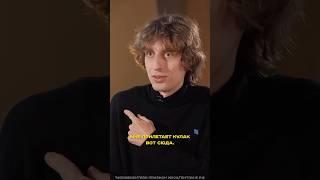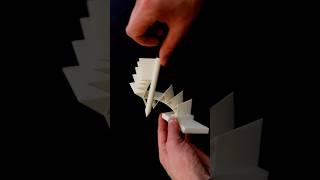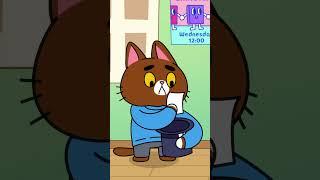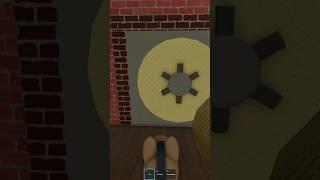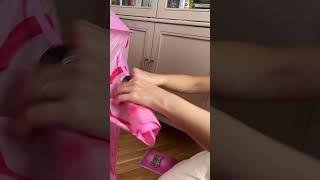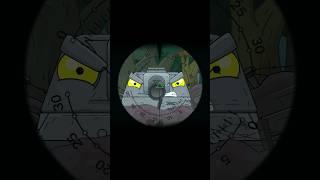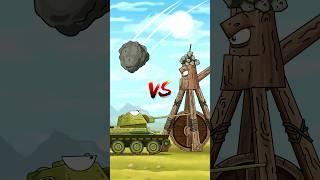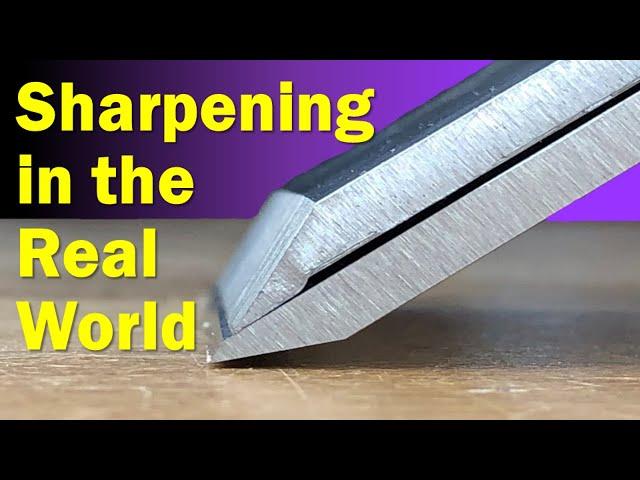
Sharpening Plane Blades And Chisels - In the Real World
Комментарии:

👍👍‼️
Ответить
Sales guy's ! They always rig the demo to make it look easy. In practice this method only works on edges narrower than the width of the blade.
Dont believe me ? Try this method on a wide panel.
You dont use jack's as finish planes. They are a truing plane.

The difference between the 2 cherry pieces was amazing Rob! Quite an eye opener. 😳
Ответить
Where did you get the Seabee patch?
Ответить
It looks like the chisel was previously sharpened with a Tormak machine?
Ответить
hey rob, what about a shooting plane? i have a veritas shooting plane, should i do the back bevel with the ruler? or no ? I thought it should be treated like a standard low angle jack, but not exactly sure, of coarse in the instructions is says nothing about a back bevel so ... ask the king right ?? what do you think king ? lol love your work
Ответить
The amount of skill and knowledge here is absolutely amazing.
Ответить
Cherry picking a clean straight piece of timber and edge planing it to demonstrate how good your edge is does not help those who are planing table tops, wide panels and frames etc.
Why ? Because the plane body sides lifts the edge away from the wood forcing you to adjust the blade down, at which point the edges of the iron leave a step in the surface which forces the plane body to ride high and instead of a smooth surface, they get a surface with ridges and a plane that doesn't give that nice full width shaving they see you getting. So they adjust the plane iron down further to try and get a full width shaving and the cut becomes to deep and chokes up the plane.
To get around this problem the easiest way the Japanese relieve the wooden block faces either side of the edge. Only this way can you get super fine full width shavings across the entire width of a surface without those gouge steps.
If you crown the blade edge you no longer get an even shaving across the entire width.
THAT is the real issue that tubers never address in their instructional video's.
The old wooden coffin shape smoothers were shaped that way to solve the problem as were the Norris types.
Only a very small area either side of the blade needed to be relieved very slightly to allow the blade to cut full width.
Bet you never knew that did you Rob ?
Your welcome.

Excellent tuition.Thank you ,really well ex -planed. 😊
Ответить
Thanks for the excellent tutorial. I'll invest in some better stones and practice your methods. Maybe I can graduate from a wood butcher to a woodworker. Maintaining my old Cheoy Lee sailboat involves working some very expensive teak from time to time.
Ответить
Impressive 😊
Ответить
Get a haircut, madam.
Ответить
14 minutes in he finally sharpens a blade
Ответить
Robert Bussiere again,
Have you ever had Japanese blades or chisels? They make some great chisels and plaines

Hi my name is Robert Bussiere,
And I'm just starting to do wood working for the first time in my life, I'm 67 years old
Common sense tells me to bring your chisels and plaine blades 100% after each use

I've spent 32 hours trying to sharpen my plane blades - they're worse now than when I started. No wonder kids these days are spending all their time playing video games.
Ответить
7 mins in .. and no shapening .................
Ответить
Great tutorial. Thank you.
Ответить
There should be a NSFW tag when you bust that chisel out. Nice cuts!
Ответить
Hey can you pretty please make a guitar your skills could really help my building process specifically getting accurate fretboards and necks with hand tools only u can use a bandsaw ❤
Ответить
10th Moutain. ......SHIT YEAAA...Represent !!!!!!!!
Ответить
This dude is military 100%.
Ответить
What's the grit number of your stone?
Ответить
I am not a wood worker, BUT, enjoyed watching an artist/craftsman share his knowledge, I do enjoy sharpening my kitchen knives.
Ответить
33 minutues I can never get back
Ответить
Rob, when it comes to new v old hand planes, if you were trying to keep expense down, would you drop a new blade in an old Stanley if it had a broken tote but was otherwise in fantastic condition, or would you just save the time and effort of cleaning and restoring the older hardware and go with a newer plane and just tune it up? Like say a wood river. V a Lie Nielson (I probably spelled that wrong).
Ответить
The why we do this is so important and keeps the information in your system. Thanks Robb.
Ответить
I’d rather use hand tools than machines I’m kind of old fashioned that way
Ответить
It is easier to stay at the top of the sharpening curve than it is to start the climb from basecamp.
Ответить
as soon as I saw the mullet I knew he knows what he's talking about
Ответить
Can you recommend a 5 1/5 plane? I'm a hobbyist working on 3/4" to 1/8" wood. Intarsia, projects for the house, scroll sawing projects for sale (not so much) and Christmas gifts for friends and neighborhood kids.
Ответить
All metall workers and knife makers tell us to get to 16000 grit polish from 1000 grit you have to double the grit of the stone incrementally and use a 2000, then 4k, and 8k stones before 16k. That makes the edge very smooth and more stable like a katana. Same thing in wood sanding. You don't jump from 80 grit to 300. I understand your method is quick, but I respectfully believe if you added at least a 2000 grit stone and perhaps an 8k before 16k (which doesn't sharpen but polishes the blade), you will get much lasting blades. A 1000 grit sharpen metal is not very stable as it has larger micro teeth than a 2000. Perticularly if you use a diamond stone. You can replace that with 3M lapping papers that are much better quality and can go way beyond 16k. It will add 32 more seconds to your process, but you will get a mirror polish edge that lasts much longer on a 60 Rockwell A1 or A02 metal. I wonder if knife like sharp edge on a hande plane would cut the wood the same way. The back bevel that you add remides me of some Japanese knives that have a very small bevel on the back ( without a primary bevel) and it makes them very sharp. But the back bevel on those knives has much bigger angle than the front bevel.
Ответить
Rob, I know you hear this a lot. You have improved my planning techniques 100 fold on your sharpening techniques. It has set me back a lot of funds, but it was worth it. I’ve been using water stones for 30 years. Shapton stones are by far the best. Thank you again.
Ответить
I have been making MASSIVE errors with this and today, after figuring out my problem, I am hand grinding all of my plane blades. Grinder and chin wheel is in my future.
What did I do?
I bought some DMT dis sharp sharpening stones when I first really started getting into this.
He recommends 1000 grit to start then to the 16000.
Me? I have the “fine” dmt stone and I assumed it would be close to the 1k grit of the trend stone. Wrong, wrong, wrong!!! Insanely wrong.
I looked it up because I have been needing to re sharpen my main bevel too frequently and found that the dmt “fine” is 600!!!! grit. Smh ….
No wonder it’s not working as well.
I mean I still get good results using hand sharpening rob teaches but it eats my blade up so fast I need to regains every other week.
Trend stone in the mail…
I have been basically working full the entire time and scratching my 16 k ..

still using the original stanley/record blades in my planes for 45yrs and hit nails, screws, sand and just about anything you could think of!! still using my grandads oil stone which is really worn out and anythimg but flat, i grind down on a belt sander but i'll guarantee it will outlast your long winded expensive sharpening techniques!! hit an oak knot, no probs, one gentle swipe on the oil stone and we are off again..... if you got out your 'shop' and did actual woodworking instead of making vids, you might realise that in the 'real world' your sharpening techniques would have you sharpening blades more often than actually planing timber!!
Ответить
This guy is a giant gasbag who loves the sound of his own voice, all I learned here was this guy can sharpen a blade but couldn't teach ABC's or to teach how to tie my shoe laces!
Ответить
One thing... you have fabulous hair. Great to see manly man like you rocking the mane :D (i have terribly thin hair, always had.. )
Ответить
At least theoretically it makes sense to spend more time really "polishing" the edge to be as uniform as possible. Not from a sharpness standpoint, but from a longevity standpoint. The more uniform the edge is, the more structural integrity the edge has, because the force it meets in the wood is distributed on the steel in a more even fashion, causing less rounding of the edge. Not sure someone has ever done testing on that theory, but at least blade smiths that talk about kitchen knives say, that spending more time really perfecting the edge, results in an edge that will stay sharp for longer.
Ответить
Is that a sabot round at the end of your tool cabinet?
Ответить
Rob, I love the teaching, and frankly, I've been watching you for years. I want to be able to do the freehand method you espouse, but when I've tried it in the past, I just tend to screw everything up. Part of the difficulty for me stems from what I think are two issues: 1. it can be difficult to know if you're dead on the face, or if you're just a hair high or low. You might know, but I don't feel like I know. I want to be sure I'm on the flat, but it's just not that clear, to my mind. 2. My bench is not low and I don't have a "low" place in my shop. Is it important enough to build or buy a table? As I say, I try this from time to time but always end up creating more work for myself. I can imagine getting this figured out if I could attend a workshop, but I don't honestly have time/money for that currently. Your thoughts?
And thanks again for an awesome channel, willingness to share knowledge, and respect for those who serve.

Rob can you tell me what type of wax you use on plane soles?
Ответить
What's the brand of that wax stick you use? It seems a lot handier than having it in a jar.
Ответить
Rod what plan are you using make model you have???
Ответить
List of sharpening equipment?
Ответить
I hope to have your skills one day
Ответить
I love your videos
Ответить
Thank you Rob! I enjoy your style of teaching and explaining. I am restoring an old Stanley Bailey plane from 1904 and your videos have been so helpful. I was about to ask a question and you answered it as I kept watching! Save your questions for the end folks! *Question*: Is there ever a chance you need to re-flatten the bottom of a plane? I have a Diamond stone and was about to go to town but it dawned on me maybe the hand planes are similar to the way a joiner works? Thanks for everything!
Ответить












